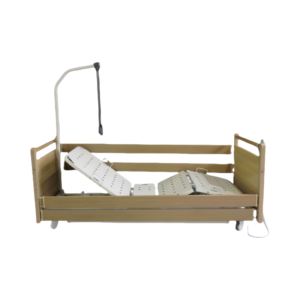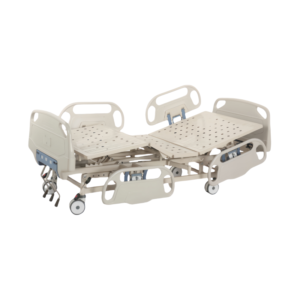Medical nursing beds play a crucial role in healthcare facilities, enhancing patient comfort and facilitating effective care. Among various types of nursing beds, the MIRUI nursing bed stands out for its innovative design and advanced features. This article will delve into the structure and installation of nursing beds, with a particular focus on the MIRUI nursing bed.

1. Structure of Nursing Beds
A. Electric Nursing Bed Structure
Electric nursing beds are designed to provide optimal comfort and convenience for both patients and caregivers. The primary components include:
- Headboard Frame: This structure supports the patient’s head, allowing for comfortable resting positions and enabling healthcare providers to conduct examinations easily.
- Footboard Frame: Provides support for the legs, ensuring stability and comfort, especially for patients with mobility issues.
- Bed Frame: The foundational structure of the bed, offering robust support for all components and maintaining overall stability.
- Backrest Surface: This adjustable surface allows caregivers to position the patient at various angles, promoting comfort and aiding in medical assessments.
- Fixed Surface: A flat support area that ensures a stable resting place for patients, beneficial for general care and recovery.
- Thigh Surface: Specifically designed to adjust the position of the thighs, enhancing overall patient comfort during prolonged use.
- Backrest Handle: An essential feature for adjusting the backrest, enabling easy position changes for the patient.
- Leg Surface Handle: Similar to the backrest handle, this allows caregivers to adjust the leg position for optimal comfort.
- Overall Lift Control Handle: Facilitates the entire bed’s height adjustment, ensuring easy access for caregivers and patient comfort.
- Caster Wheels: Equipped with brakes, these wheels allow for easy maneuverability and ensure that the bed remains securely in place when needed.
- Push Rod Motor: The driving force behind the bed’s electric adjustments, providing smooth operation and reliable performance.
- Controller: The user interface that allows caregivers to operate the bed’s features easily, enhancing efficiency in patient care.
B. Manual Nursing Bed Structure
Manual nursing beds are designed for straightforward use, comprising essential components such as:
- Headboard Frame: Supports the head, similar to electric models.
- Footboard Frame: Ensures leg support and stability.
- Bed Frame: The backbone of the bed, providing structural integrity.
- Backrest Surface: Adjustable for patient comfort, though manually operated.
- Fixed Surface: Provides a stable area for patient care.
- Thigh Surface: Enhances comfort for the patient’s legs.
Optional Features: Manual beds may include backrest and leg surface handles for added flexibility.

2. Installation Steps for Nursing Beds
Proper installation is crucial for the safety and functionality of nursing beds. Here’s a detailed guide to installing the MIRUI nursing bed:
- Installing Caster Wheels: Begin by selecting two caster wheels with brakes. Install these diagonally on the bed frame legs. The remaining wheels should be placed in the remaining positions for overall stability.
- Installing the Backrest Surface: Connect the backrest surface to the bed frame using the back frame pin. Secure the connection with a retaining pin to ensure it is firmly locked.
- Installing the Headboard: Align the headboard with the holes on both sides of the backrest surface, inserting it and tightening the screws securely.
- Installing the Back Gas Spring: Raise the backrest surface to a 90° angle and attach the gas spring to the backrest’s base support. Connect the lower support to the main bed frame using a pin and secure it with a retaining pin.
- Installing the Side Gas Spring: The installation is similar to the back gas spring. Slightly lift the side surface, attach the lower support to the bed frame, and secure it.
- Installing the Foot Surface: Flip the foot surface over, connect the tube and support with a pin, and secure it with a retaining pin. Align the connection holes with the thigh surface and secure them.
- Installing Foot Guards: Attach the foot guards to the designated holes on the foot surface, tightening with screws to ensure stability.
- Installing the Safety Belt: Remove the safety belt and loop it around the headboard’s cushion, passing it through the limit holes at the back.
By following these structured installation steps, healthcare providers can ensure the MIRUI nursing bed operates effectively and safely, enhancing the patient care experience.
Conclusion
The MIRUI nursing bed exemplifies innovation in patient care, combining advanced design with essential functionality. Understanding its structure and proper installation not only aids in providing high-quality care but also ensures the longevity of the equipment. By integrating relevant keywords and terms throughout this article, we aim to improve visibility and search engine ranking, making it easier for healthcare professionals to find the information they need about nursing beds.
